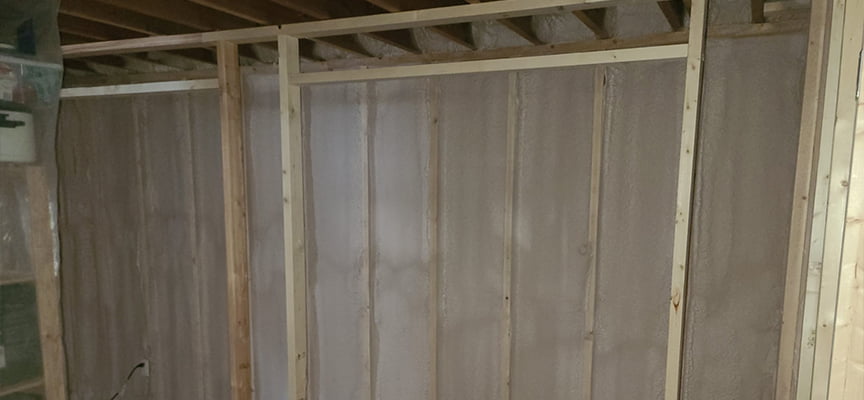
Spray foam insulation has gained popularity for its superior insulating properties and energy efficiency. It is a highly effective method for insulating homes and buildings. It provides an airtight seal that enhances energy efficiency, reduces utility bills, and improves indoor comfort.
However, various myths and misconceptions can deter homeowners from choosing spray foam insulation services.
This blog addresses and debunks these myths, offering a clear and factual understanding of spray foam insulation.
Myth 1: Spray Foam Insulation is Only for New Constructions
Many people believe that spray foam insulation is suitable only for new construction projects. However, this is far from the truth. Spray foam insulation is highly versatile and can be used in both new constructions and existing homes. It is an excellent choice for retrofitting older homes to improve energy efficiency and comfort.
The misconception may stem from spray foam insulation often being highlighted in new construction projects due to its superior insulating properties. However, it is equally effective for renovations and retrofits.
Spray foam insulation can be applied to existing homes’ walls, attics, basements, and crawl spaces. It is particularly beneficial for older homes with poor insulation or homes experiencing drafts and inconsistent temperatures.
Myth 2: Spray Foam Insulation Is Harmful To Your Health
Some people worry that spray foam insulation releases harmful chemicals that can affect indoor air quality and pose health risks. While it is true that spray foam contains chemicals, modern formulations are designed to be safe when properly installed.
This myth likely arises from the fact that spray foam insulation involves chemical reactions to expand and harden. Concerns about off-gassing and volatile organic compounds (VOCs) contribute to this misconception.
Professional spray foam insulation services use high-quality, safe materials that comply with industry standards. Once cured, spray foam insulation is inert and does not release harmful chemicals.
Proper ventilation during installation and using certified products like Insulthane® 450 and Extreme Insulthane® ensures safety and air quality.
Myth 3: Spray Foam Insulation Is Too Expensive
Spray foam insulation is often perceived as prohibitively expensive compared to other insulation types. While it is true that the initial cost is higher, it is essential to consider the long-term benefits and savings.
The upfront cost of spray foam insulation is higher than that of traditional insulation materials like fibreglass or blown-in insulation. This initial expense can deter homeowners on a tight budget.
Spray foam insulation provides significant long-term savings by reducing energy bills due to its superior insulating properties. It eliminates air leaks, which can account for up to 30% of energy loss in a home.
Over time, the energy savings can offset the initial investment, making spray foam insulation a good choice.
Myth 4: Spray Foam Insulation Is Not Eco-Friendly
There is a misconception that spray foam insulation is not environmentally friendly due to its chemical composition. However, spray foam insulation can contribute to a more sustainable home environment.
Concerns about the chemicals used in spray foam and their environmental impact have led to the belief that it is not an eco-friendly option.
Spray foam insulation significantly reduces energy consumption, which in turn lowers your carbon footprint. By enhancing your home’s energy efficiency, spray foam insulation helps decrease the demand for heating and cooling, leading to fewer greenhouse gas emissions.
Additionally, some spray foam products, like those used by Classic Spray Foam, incorporate eco-friendly materials and manufacturing processes.
Myth 5: Spray Foam Insulation Degrades Over Time
Another common myth is that spray foam insulation degrades and loses its effectiveness over time. In reality, spray foam insulation is highly durable and maintains its insulating properties for many years.
Some people confuse spray foam insulation with other types of insulation that can settle or degrade over time.
When professionally installed, spray foam insulation forms a permanent bond with the surfaces it is applied to and does not settle or degrade. High-quality products like Insulthane® 450 NM ocSPF and Extreme Insulthane® provide long-lasting insulation performance.
Myth 6: Spray Foam Insulation is Flammable
Concerns about the flammability of spray foam insulation are common, but modern spray foam products are designed to meet stringent fire safety standards.
Early formulations of spray foam insulation had different fire safety standards, leading to concerns about flammability.
Current spray foam insulation products are treated with fire retardants to enhance their fire resistance. For example, DC315 is a fire-resistant coating that can be applied over spray foam to meet fire safety requirements. When properly installed, spray foam insulation contributes to the overall fire safety of a building.
About Us
At Classic Spray Foam, we specialize in providing top-notch spray foam insulation and fireproofing solutions to ensure the safety and energy efficiency of your property. With a team of experienced professionals, we are committed to delivering high-quality services tailored to meet your specific needs.
For more information, visit our website or contact us today.